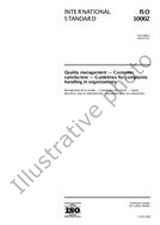We need your consent to use the individual data so that you can see information about your interests, among other things. Click "OK" to give your consent.

ISO/IEC 8825-1-ed.6.0
Information technology - ASN.1 encoding rules - Part 1: Specification of Basic Encoding Rules (BER), Canonical Encoding Rules (CER) and Distinguished Encoding Rules (DER)
Translate name
STANDARD published on 30.6.2021
The information about the standard:
Designation standards: ISO/IEC 8825-1-ed.6.0
Publication date standards: 30.6.2021
SKU: NS-1029589
The number of pages: 28
Approximate weight : 84 g (0.19 lbs)
Country: International technical standard
Category: Technical standards ISO
The category - similar standards:
Annotation of standard text ISO/IEC 8825-1-ed.6.0 :
This document specifies a set of basic encoding rules that may be used to derive the specification of a transfer syntax for values of types defined using the notation specified in Rec. ITU-T X.680 | ISO/IEC 8824-1, Rec. ITU-T X.681 | ISO/IEC 8824-2, Rec. ITU-T X.682 | ISO/IEC 8824-3, and Rec. ITU-T X.683 | ISO/IEC 8824-4, collectively referred to as Abstract Syntax Notation One or ASN.1. These basic encoding rules are also to be applied for decoding such a transfer syntax in order to identify the data values being transferred. It also specifies a set of canonical and distinguished encoding rules that restrict the encoding of values to just one of the alternatives provided by the basic encoding rules.
We recommend:
Technical standards updating
Do you want to make sure you use only the valid technical standards?
We can offer you a solution which will provide you a monthly overview concerning the updating of standards which you use.
Would you like to know more? Look at this page.



 Cookies
Cookies
